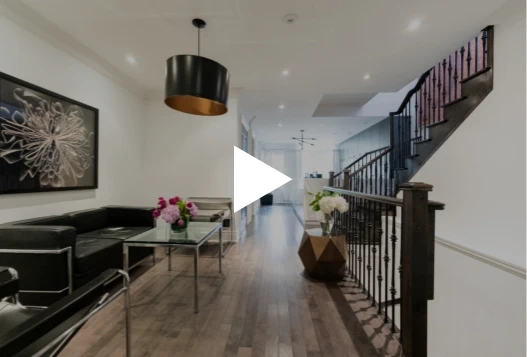By Jerome Edelstein, MD
Edelstein Cosmetic is able to provide patients with natural looking anti-aging treatments tailored to their unique needs. Since everyone ages differently, it only makes sense that the most effective treatment for reversing the signs of facial aging must be customized for each patient.
The first step in ensuring successful treatment involves working to determine each patient’s individual physical state and anti-aging needs. Genetics, past tissue trauma, health and lifestyle factors all contribute to how the face ages, making it impossible for the same procedures to be used in every situation. Fat under the skin and the architecture of bone and muscle structures can vary greatly from person to person; even identical twins often presenting radically different signs of aging.
We accommodate for variety by first obtaining an in-depth medical history report from every patient. He then works with them to understand their exact aesthetic concerns, improvement goals and expectations. The procedure(s) then decided upon are informed by individual factors like age, gender, medical history, budget, occupation, and willingness to experience discomfort and recovery time.
Patients often come to Edelstein Cosmetic without a clear understanding of what the best treatment for their anti-aging needs is. Our surgeons considers it their responsibility to help illustrate appropriate plastic surgery operations by explaining the available options and how they can address facial aging concerns. Part of this is to dissuade patients from pursuing unnecessary or unsafe treatments.
The 12 step facial aging assessment process
Age
The level of correction that younger patients seek is usually limited to skin level issues while advanced age presents aesthetic conditions that stem largely from deeper, supportive facial structures. Gender
Not only do men and women experience varying cultural perceptions regarding “acceptable aging”, they also manifest different physical signs as well. For men, hairline changes (and the ability to hide imperfections with facial hair) may change the procedures recommended by your surgeon. The natural thickness of a man or woman’s skin will also dictate how to proceed.
Dr. Edelstein, one of the leading plastic surgery doctors in Canada, tailors the course of treatment to male patients in order to avoid the “feminizing” effect common in cosmetic surgery. In order to offset this, a less aggressive procedural approach is taken to preserve masculine features while still correcting unwanted signs of aging.Skin Pigment
The presence of any dyschromia, a term used to describe irregular skin pigmentation, gives us clues as to a patient’s skin care history. Pigmentation may indicate the use of past treatments, help classify skin type and determine whether or not an individual is prone to sun damage.Medical History
As with all forms of surgery, medical history plays a large role in determining eligibility for future procedures. Several factors may play a role in how a patient’s facial aging has progressed. Prior facial injury or surgery, a history of significant weight gain/loss, the presence of disease, use of medications and past or present smoking can contribute to the appearance of aging. These same traits may also be relevant to the post-treatment recovery process.Occupation and Hobbies
A patient’s occupation and hobbies may contribute to signs of aging (such as the effect marathon running has on tissues). We need to consider these issues alongside the importance of physical appearance to an individual’s job and the amount of time they can take off for recovery before suggesting a treatment course.Facial Asymmetry
Facial asymmetry may be noticeable or very slight. Patients who are bothered by uneven features may require a different form of treatment than those who are not. Understanding the underlying cause behind asymmetry is also important. Expression Lines
We will determine the areas involved with creating his patient’s natural facial expressions. He can use this information to assess whether or not these facial components are responsible for the formation of lining and wrinkles. Risk vs. Reward
Every patient must decide for themselves if the procedures recommended to them are within their ability to tolerate. This extends to both surgery and recovery. It’s also important for each individual to determine if a given treatment course is within their budget. Self vs. Outside Perception
Self perception is the key to self confidence. We seek to help each patient resolve the issues that bother them, not correct the problems he may observe. Reconstruction or Rejuvenation?
Anyone over the age of 35 is encouraged to bring a photo of themselves, taken when they were in their late teen years or early 20s, to their consultation. Using this picture as reference allows us to help rejuvenate the facial appearance rather than reconstruct it. This approach leads to improved, but still natural looking results. Varying Facial Structures
Everyone has a different facial structure determined by genetic background. Along with assessing the elasticity of an individual’s skin, their appropriate fat/muscle volume and the supportive structures that define their face, we are able to use this information to reduce signs of aging in a natural manner. State of Mind
Happy and unhappy patients will view their physical appearance and the outcome of their anti-aging treatment in extremely different ways. Although mental wellbeing can be difficult to fully assess, we attempt to gauge every patient’s state of mind as an important part of the consultation process for plastic surgical procedures.
